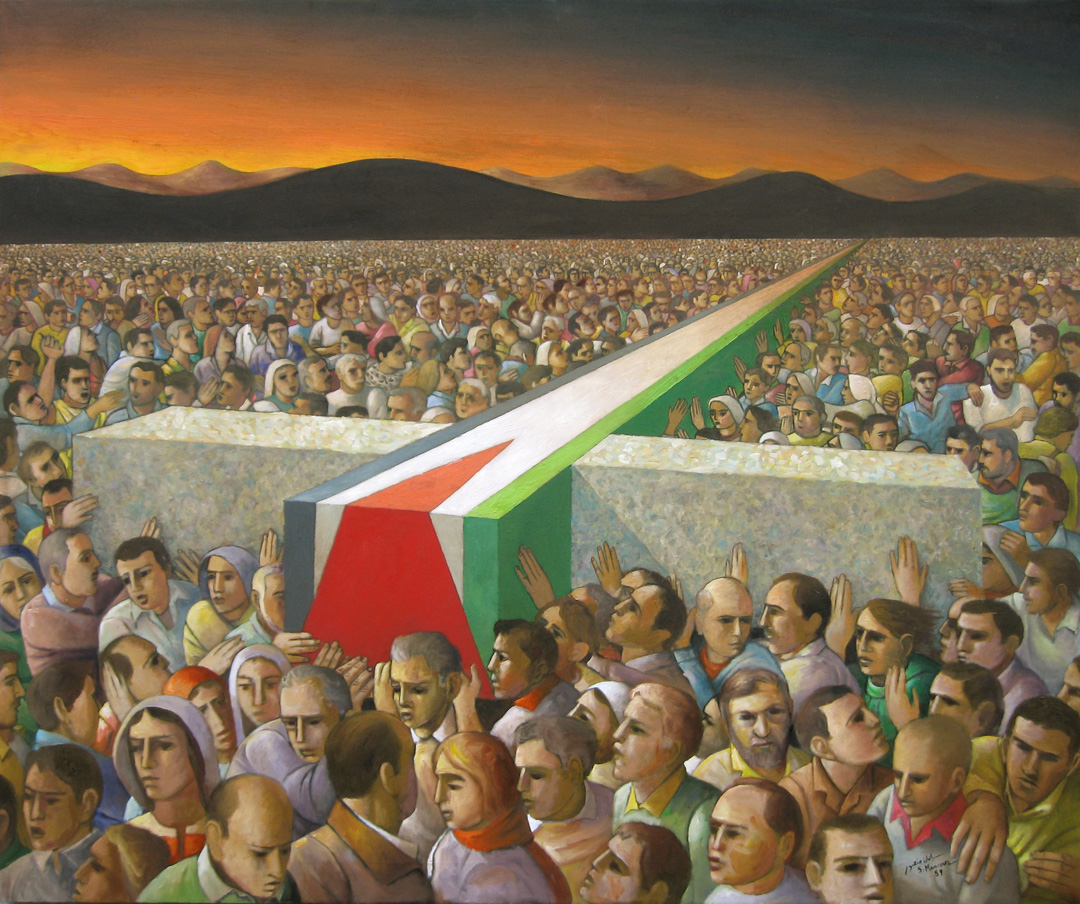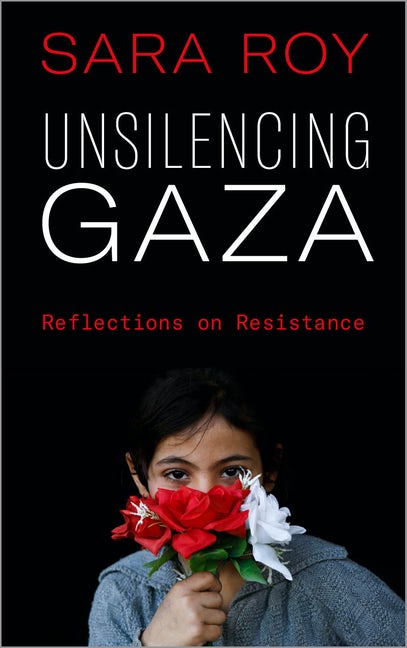
Unsilencing Gaza: Reflections on Resistance by Sara Roy
Pluto Books (2021)
ISBN 9780745341378
Gilbert Achcar

No Western scholar is more associated with Gaza than Sara Roy. The Senior Research Scholar at Harvard University’s Center for Middle Eastern Studies has been working on the Gaza Strip for over 35 years: her first research trip there occurred in 1985. “At the time I could not have imagined that Gaza (and Palestine) would be as diminished and compromised as it is now,” she outrightly states at the very beginning of her most recent book.
And yet, Roy’s initial book on Gaza, The Gaza Strip: The Political Economy of De-development, first published in 1995 and twice reedited since then, was anything but optimistic. It established her reputation not only as a specialist of Gaza, but also as a political economist of development, or more precisely “de-development” — a concept that she first formulated in a 1987 article, defining it as “a process which undermines or weakens the ability of an economy to grow and expand by preventing it from accessing and utilizing critical inputs needed to promote internal growth beyond a specific structural level.”
Sara Roy’s special relation with Gaza and Gaza-related issues never ended. She published two further books centered on the Strip. Failing Peace: Gaza and the Palestinian-Israeli Conflict, a collection of articles published in 2007, included — along with further elaborations on Gaza’s political economy — political assessments of the Gazan polity, particularly Hamas, as well as of the overall Palestinian-Israeli conflict and failed “peace process” (one piece in the collection is entitled “An Oslo Autopsy”).
Hamas and Civil Society in Gaza: Engaging the Islamist Social Sector, Roy’s second major monograph, came out in 2011. It is the most thorough study of the Palestinian variant of what the author called “Islamist Social Institutions” — an assessment of the successes and failures of the social network of charities, and health and care services that Hamas has established in the Strip and that has been a major factor in acquiring and maintaining its political constituency.
The New Politics of Exclusion: Gaza As Prologue (Ekeland & Roy)
Gaza Mythologies (Pappe)
That second monograph included an epilogue on “the devastation of Gaza”: the consequences of the devastating onslaught that Israel launched on the Strip at the very end of 2008. This first 2009 war against Gaza, dominated by Hamas since 2007, was followed by two further massive offensives in 2012 and 2014. These war episodes punctuate Sara Roy’s latest book: she has commented extensively on the successive rounds of Israel’s pounding of the overcrowded Strip and her main relevant writings are gathered here, along with interventions in the debate on US policy towards the Israel-Palestine conflict and a statement on Gaza that she delivered before the United Nations Security Council in July 2015 at a meeting of the Israel-Palestine Non-Governmental Organization Working Group (the statement has been previously published as an afterword to the third edition of Roy’s first book).
Gaza, like Palestine, exists in parentheses. It is where misery is seen but remains unexamined and, most crucially, unfamiliar. Redemption is therefore not possible for Gaza and compassion cannot be elicited, freeing us of any uncertainty or shame. Yet, what does it mean when resolution is found in the despair and torment of another people? —Sara Roy
These pleas to stop the cycle of violence and bring an end to Gaza’s constantly stoked humanitarian tragedy are supplemented with occasional writings on various Palestine-related issues, all written between 2007 — the year when Sara Roy’s earlier collection was published — and 2019. In addition to these collected articles, Unsilencing Gaza includes three new pieces: a brief reflection on how the handling of the Covid-19 pandemic provided a crude illustration of Israel’s treatment of the Gazans, which Roy describes as appalling; a revisiting of the voluminous field notes that she had taken during her doctoral fieldwork stay in the Strip in 1988-89; and a text surveying the most recent developments in Gaza on the socioeconomic level as well as with regard to the role of Hamas, originally written to bring up to date a book of Roy’s work to be published in Japan.
Failing Peace included a first section reflecting on how being a child of Holocaust survivors affected Sara Roy’s view of the Palestinian-Israeli conflict. Unsilencing Gaza likewise includes a section entitled “A Jew in Gaza,” in which Roy represents again the direct connection between her familial background and her commitment to the cause of justice for the Palestinians. A very powerful text in that regard is the author’s open letter to the members of the German government about a motion passed by the Bundestag in 2019 that equated the Boycott, Divestment and Sanctions (BDS) campaign with antisemitism. Roy explains remarkably well and concisely what many would believe to be a non sequitur, namely the inference of sympathy with the Palestinian victims of Israel from the contemplation of the Nazi genocide of the European Jews to which Israel claims to be the historical response.
“If your history has imposed a burden and an obligation upon you, it is to defend justice not Israel,” says Sara Roy to the Germans. “Your obligation does not lie in making Israel or the Jewish people special or selectively excusing injustice because Jews happen to be committing it; it lies in holding Israel and Jews to the same ethical and moral standards that you would demand of any people, including yourselves. … Your sense of guilt, if that is the correct word, should not derive from criticizing Israel. It should reside in remaining silent in the face of injustice as so many of your forebears did before, during and after the Holocaust.”
“A Jew in Gaza” could have also been the title of the book’s epilogue, in which Roy reproduces the prologue to her book on Hamas, which relates the story of her visit to an Islamic kindergarten in Gaza in 1999. She was asked by one of the directors if she was a Christian. A discussion ensued after she replied that she is Jewish, provoking surprise bordering on disbelief among those present. The tension got eventually dissipated when the only woman director, after asking Sara Roy if she was a mother and learning that she was, emphasized the sameness of the human condition: “We are no different than you.”
Roy was obviously deeply moved by this experience, she who could make hers the Latin poet’s maxim: “nothing human is alien to me.” A profound sense of human empathy emerges from her writings. It intertwines with intense melancholy in this new collection. The former determines the latter: even though Roy is always keen on letting a ray of hope shine through her reflections, the reader cannot fail to notice a sense of pessimism gradually permeating her vision and bordering on despair as time goes by, in the face of the constant degradation in Gaza’s condition under repeated attacks from Israel. She concludes her new book’s introduction with a plea “to humanize a part of the world few of us will ever know and to aspire to a ‘shareable world’ (Toni Morrison), that is slipping beyond our reach.”
The contrast between this plea and Sara Roy’s acknowledgement that what she so strongly wished for is “slipping beyond our reach” is striking. There is indeed a huge difference between the Gaza of the first Intifada — to this day the most inspiring episode in the long history of Palestinian struggle — which she knew well, since she sojourned there in 1988-89, and present-day Gaza. Then, everything seemed possible: the amazing popular uprising in the West Bank and Gaza attracted global sympathy and sharpened division among the Israeli Jewish population, of which increasing numbers were becoming opposed to the continuation of the occupation that had started in 1967, more than twenty years earlier.
Over 80 percent of Gaza’s total population now requires humanitarian assistance despite the fact that they are desperate to work. Because of the Israeli blockade, approximately 1.6 million men, women and children have been forced into dependency on food and cash handouts. Acquiring enough food on a daily basis is what presently consumes most families. Some people are now seeking food in rubbish piles and homelessness is a growing problem because people cannot afford to pay their rent. —Sara Roy
Now, the situation is bleak and all but hopeless. Popular struggle has been superseded by exchanges of fire and rockets. Both are asymmetric battles, of course, since Israel’s military supremacy is overwhelming. But one asymmetry — that which has been on display over recent years — is primarily quantitative, whereas the previous asymmetry was qualitative and hence more advantageous to the Palestinians. They could then counter the physical superiority of Israel’s weaponry with the moral superiority of the non-violent fight of the oppressed over the oppressors’ brutal repression. Revisiting her old fieldwork notes actually provides Sara Roy with a good opportunity to emphasize the merits of the first Intifada. The reader can thus better measure the degradation that occurred since then.
Melancholy peaks in Roy’s choice of excerpts from a prose poem by Mahmoud Darwish (in Sinan Antoon’s translation) to conclude her collection — a poem whose title “Silence for Gaza” is a counterpoint to the book’s title. It ends with a depiction of the obstinacy of hopeless struggle when that condition has become the only alternative to surrender: “It is neither death, nor suicide. It is Gaza’s way of declaring that it deserves to live.”



